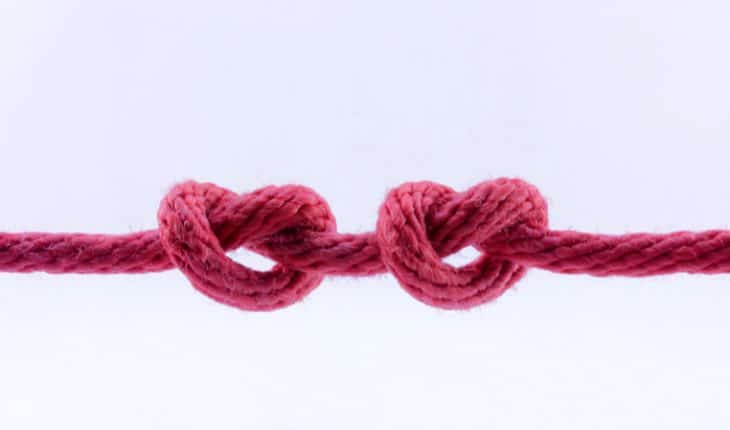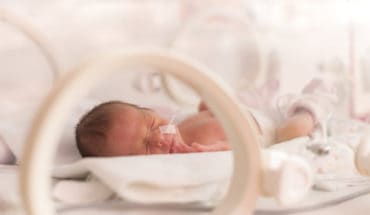At the time of birth 30-40% of a newborn’s total blood volume is still circulating via the umbilical cord and placenta. It is commonly believed that this blood, usually referred to as ‘cord blood’ is not needed by the baby and is in fact ‘extra’ and as such a waste product to be disposed of. However, the umbilical cord is merely the vessel that the baby’s blood travels through to the placenta and back again; picking up oxygen and nutrients and removing waste products that ensure the foetus’ and eventually the newborn’s immediate wellbeing and survival.
The modern obstetric practice of immediate umbilical cord severance; introduced without any evidence of benefit to the mother or baby in normal circumstances, has created the myth that the blood travelling through the umbilical cord was in fact not even the baby’s blood but somehow belongs to the cord. The mainstream media often depicts this amazing life support system, that has nourished and nurtured the foetus in utero throughout pregnancy, as suddenly becoming dangerous to the baby at birth and as such needs to be tied off or cut away immediately to prevent some (unimaginable) harm. Of course, this is not the case and the normal physiology of the optimal adaptation to extrauterine life of a baby depends on having those first a few minutes of oxygenated support and the necessary volume of blood transfused back into its body to support its cardio vascular system as it begins to breath air.
The umbilical cord is commonly clamped shortly after a baby is born. Early cord clamping is generally carried out in the first 60 seconds after birth, whereas delayed or optimal cord clamping is carried out after 3-5 minutes or when the cord has ‘collapsed’ and turned white. This is when the baby has received all its required and necessary blood back into its body. This blood is not just rich in oxygen or important in terms of volume, but contains stem cells, immune cells and iron for the best chance of survival both at birth and during infancy. In fact, delayed and optimal cord clamping, carried out 3-5minutes after birth or when the cord has ‘collapsed’ and tuned white, has been shown to have many positive benefits on baby. Research from those babies who have experience optimal cord clamping shows impressive results, including;
• Increased iron stores in the neonatal period.
• Reduced mortality in pre-term infants
• Decreased incidence of breathing difficulties requiring special care admission
• Increased initiation and duration of early breast feeding.
• Decreased umbilical infections
• Increased white cells-infection prevention
• May benefit neurodevelopmental outcomes, particularly in males
However, recent statistics from the Positive Birth Movement show parents don’t seem to be getting enough information about cord clamping – so much so that 40% of babies born in the UK are not having their cords clamped in accordance with the National Institute for Health and Care Excellence (NICE) guidelines.
The new-borns blood is a very rich source of stem cells, which are currently used in stem cell therapy for various blood cancers and disorders including; leukaemia, lymphoma and myeloma. To date, stem cell therapy is recognised as a treatment in over 80 diseases and they are also considered to be a cornerstone of developments in regenerative medicine, being used in promising clinical trials to treat conditions like stroke, autism and cerebral palsy.
So, added to the issue of premature cord severance (early clamping), are the choices parents may make to donate to the NHS or store their baby’s stem cells for potential future use either by them or others. To date these stem cells have been harvested by removing up to and occasionally more than 100mls of baby’s blood via the cord; but this is not the cord’s blood, not waste blood, not dangerous blood but entirely necessary to the baby who needs its own stem cells and blood at the point of birth.
There are many parents in the UK that have donated ‘cord blood’ to public cord blood banks believing that this blood is just a waste product that may benefit someone else; not for a moment thinking that the person it may benefit most, is their own baby. In fact, the NHS has a large cord blood bank and according to their website 22,000 women have donated ‘cord blood’ to public banks. Typically, the NHS blood bank requires 100mls, which can be between 30-40% of the baby’s blood, a significant amount to lose for any newborn. If a child or adult had a third of their blood removed they would be considered to have had a class 3 haemorrhage and very likely require a blood transfusion to replace this blood.
The question we now need to ask is as health care professionals are we making this information clear to parents? Are they really being informed about the potential benefits and risks to their newborn when comparatively large volumes of the baby’s blood is removed for stem cell collection? Are we making it clear to them that this is their baby’s blood that will return to its body once it has adapted to life outside of the womb and not a dangerous waste product? Being able to make informed choices is a fundamental part of the parenting journey, but it is increasingly difficult for parents to find trusted sources of information. Notably, there are some great online sites such as https://www.bloodtobaby.com that can help parents and healthcare professionals understand more about optimal cord clamping and how it fits with stem cell donation. They have an extensive research library as well as free publications available online.
On the hunt to find out as much information as I could, in February 2017 I attended an exhibition where I came across a company called Cells4Life, the UK’s largest cord blood bank. I decided to have a discussion about cord blood banking with them, to see if they had anything different to offer. It was apparent that in line with most stem cell banking companies ‘cord’ blood was not really being recognised for what it is, that is of course baby’s blood. However, what really struck me was just how open and interested they were in talking about the issues health care professionals have with cord blood banking companies. The team from Cells4life agreed that parents need to be made aware of all of the options available to them at birth and the implications of these, so that they can make a truly informed decision. They understood just how important optimal cord clamping could be for a baby’s health and explained to me about the new technology they have developed named TotiCyte. This new technology facilitates cord blood stem cell banking following optimal cord clamping. As a healthcare professional concerned with the wellbeing of newborn’s this was very encouraging and positive information. TotiCyte is a new cord blood processing technology that enables the retention of 3 times more than any other processing method from very small volumes of blood. TotiCyte requires only 10ml of blood and there is usually around 20ml of residual blood left in the placenta when the cord is left to stop pulsating and turn white. This is truly transformational and should mean the end of cord blood banks taking 30-40% of a new-borns’ blood. They will now be able to get enough stem cells from a much smaller sample – from blood that is residual and a genuine waste product after baby has what it needs first.
Imagine if parents who do choose to store their baby’s stem cells could do so in the knowledge that they can take just the small amount of blood that is left after optimal cord clamping, without any compromise to giving their baby as healthy a start in life as possible?
Medicine continues to advance and there is no doubt that the future will, in a large part, be based around regenerative medicine using human stem cells. The challenge now is promote methods that will provide these stem cells without risking the health or wellbeing of our babies at birth while also promoting practices that support optimal physiology whenever possible. There is no doubt that TotiCyte, which delivers 100-400% more stem cells than any other method, is an interesting and positive step towards this aim.
So, let’s open-up the conversation and support ways of harvesting stem cells without harming babies and by promoting optimal cord clamping whenever possible.
- Optimal umbilical cord clamping - 6th June 2018







